Talk with our local travel specialist who can help organize your trip.
Mera Peak vs Island Peak Climbing
With 8 of 14 eight-thousanders and 326 climbing peaks, Nepal is a trekkers paradise and a wonderland for trekkers and climbers alike. The Nepal Himalaya calls thousands of avid trekkers, novice climbers, and elite climbers every year. 326 mountains in Nepal are open for mountaineering expeditions. Among them, 33 peaks are classified as trekking peaks by the Nepal Mountaineering Association (NMA). Talking about trekking peaks, Mera Peak and Island Peak are the firm favorites of every climber.
Mera and Island peaks are the most popular trekking peaks in the Himalayas of Nepal. Mera Peak vs Island Peak is a hot topic among beginner climbers who want to plunge into mountain climbing. Choosing between Mera Peak and Island Peak can be a daunting task for beginners. And for this very reason, we have prepared this blog, explaining the contrast between Mera Peak and Island Peak. This blog will help you decide the one perfect peak for your next climbing adventure.
Table of Content
- Mera Peak Vs Island Peak Climbing Quick Facts
- About Mera Peak
- About Island Peak
- Similarities Between Mera Peak And Island Peak
- Mera Peak Difficulty Vs Island Peak Difficulty
- Route Of Mera Peak Vs Island Peak Climbing
- Best Time To Climb Mera Peak And Island Peak
- Permits For Mera Peak Climbing
- Permits For Island Peak Climbing
- Cost For Mera Peak And Island Peak Climbing
- Final Say
Mera Peak Vs Island Peak Climbing Quick Facts
|
Topic |
Mera Peak |
Island Peak |
|
Elevation |
6,476m |
6,189m |
|
Trekking peak |
Highest trekking peak |
2nd highest trekking peak |
|
First Ascent |
1953 (Mera Central) |
1956 (Main Summit) |
|
First Ascenders |
J. O. M. Roberts, Sen Tenzing |
Tenzing Norgay, Charles Wylie, Charles Evans, Alf Gregory |
|
Location |
Hinku Valley, Nepal |
Imja Valley, Nepal |
|
Parent Range |
Mahalangur Himalaya |
Khumbu Himal |
|
Name Meaning |
There's no meaning behind its name. |
Called Island Peak because it appears to float on a sea of ice. |
|
Style |
Trekking and Climbing |
Trekking and Climbing |
|
Climbing Grade |
F' Facial Easy' from French and Swiss Alpine Climbing Classification System |
PD + 'Per Difficult' from French and Swiss Alpine Climbing Classification System |
|
Trekking Grade |
Moderate |
Moderate |
About Mera Peak

Mera Peak, at 6,476m, is the highest trekking peak in Nepal. This peak (Mera Central, 6,461m) was first ascended on May 20, 1953, by Jimmy Roberts and Sen Tenzing, and since then, this peak has lured thousands of climbers, especially novice climbers. The climbing route entails high-altitude glacier walking and a technically straightforward ascent.
The fact that only basic mountaineering skills are required to conquer the altitude makes this peak one of the most sought-after climbing peaks by novice climbers. An expedition to the top of Mera Peak rewards breathtaking views of Mount Everest, Kangchenjunga, Lhotse, Makalu, Cho Oyu, and surrounding peaks.
Highlights Of Mera Peak Climbing
- Mera Peak is the highest trekking peak in Nepal.
- The itinerary of Mera Peak Climbing lets you explore the remote Hinku Valley.
- Five world's highest mountains over 8000m peaks are visible from the top of Mera Peak: Cho Oyu (8,201m), Lhotse (8,516m), Everest (8,848m), Kanchenjunga (8,586 m), and Makalu (8,463m)
- From a technical perspective, Mera Peak climbing is a straightforward ascent and requires no special climbing maneuver.
- Climbers wake up around 2 am on the summit day and enjoy light breakfast-get ready for the summit push.
View From Mera Peak Summit
Climbing to Mera Peak offers you the opportunity of 360-degree panoramic views of 5 world highest mountains over 8,000m: Mount Everest (8,848m), Kangchenjunga (8,586m), Lhotse (8,516m), Makalu (8,485m), and Cho Oyu (8,201m) as well as many other peaks of Khumbu Region.
Recommended Read: Top 10 Tips To Summit Mera Peak
About Island Peak

Island Peak or Imja Tse is the 2nd highest trekking peak in Nepal, first ascended in 1956 by Hans-Rudolf Von Gunten, a Swiss chemist and mountaineer. To climb Island Peak, you have to trek from Lukla all the way to Chukkung, spend one or two nights in Island Peak Base Camp at 5087m, ascend to High Camp, and finally to the top.
Above base camp, rocky steps, glaciers, and ice slopes are a bit challenging. The top part of the Island peak is slightly technical due to steep climbing. From the top of the peak, one can admire stunning views of Everest, Lhotse, Nuptse, Changtse, Ama Dablam, and surrounding peaks.
Highlights of Island Peak Climbing
- Island Peak is the 2nd highest trekking peak.
- The itinerary of Island Peak Climbing lets you cross a high mountain pass, Kongma La, and traverse the Lhotse glacier.
- The close views of Everest, Lhotse, Nuptse, Changtse, Ama Dablam, and surrounding peaks from the top of the peak is the ultimate reward of this expedition.
- The top section of the climbing is slightly technical; it involves steep ice climbs.
- Climbers wake up at 1 am on summit day, enjoy light breakfast, and proceed through ice slopes to the summit ridge.
View From Island Peak Summit
You can view the giant peaks of Nuptse (7,879m), Lhotse (8,501m), Lhotse Middle Peak (8,410m), and Lhotse Shar (8,383m), making a semi-circle to the north from Island Peak summit. The 360 panoramic views of Makalu (8,475m) in the east, Baruntse, and Ama Dablam in the south are mesmerizing. Mount Everest is a mere ten kilometers away to the north, and the view will be blocked by the massive wall of Mt. Lhotse above the summit.
Recommended Read: Top 10 Tips To Summit Island Peak
Where to travel next?
Get help from our travel specialists for holiday ideas that matches your interests.
Similarities Between Mera Peak And Island Peak
Island Peak and Mera Peak are two popular trekking peaks classified by the Nepal Mountaineering Association (NMA). Trekking peaks like Island Peak or Mera Peak don't exceed 7,000m and require little to no technical mountaineering skills. Geographically, Mera Peak and Island Peak stand adjacent to each other, separated by a mountain chain.
Both peaks have defined routes to the summit and are reasonably less challenging. Both peaks have similar heights: Mera Peak stands tall at 6,476m and Island Peak at 6,189m. One coincidental similarity between Mera Peak and Island Peak is that both peaks were first ascended in 1953; Mera Peak (Mera Central) was climbed in 1953 by Col. Jimmy Roberts and Sen Tenzing, and the southwest summit of Island Peak was first climbed in 1953. However, the main summit of Island Peak was climbed in 1956.
Mera Peak Difficulty Vs Island Peak Difficulty
Mera peak is comparatively easier than Island Peak, albeit it is higher than Island Peak. Mera Peak holds fewer challenges in comparison to Island Peak. Island Peak comprises one technical section through ice slopes, glaciers, and crevasse. Technically speaking, Island Peak demands the use of fixed ropes set up for climbing to the summit ridge. In contrast, Mera Peak is considered a technically straightforward ascent. However, Mera Peak Climbing also involves fair use of fixed rope but is straightforward. Climbers with little or no mountaineering experience can climb these two peaks. However, for Island Peak Climbing, climbers must be ready for strenuous ascent to the summit ridge using fixed rope through crevasse and ice slopes.
Route Of Mera Peak Vs Island Peak Climbing
Mera Peak climbing itinerary entails about a week of trekking to Mera Peak High Camp at 5,780m before climbing the summit. The trekking trail stretches to Hinku Valley through lush jungle and remote valleys. After arriving in Lukla, the trail continues to Hinku Valley. Paiya, Kothe, Panggom, Thankak, and Khare are the major resting spots before Mera High Camp. From the camp, gradually ascend using fixed rope and jumars to the summit. You can accomplish the Mera Peak trek and climb in about 18 days.
Island Peak climbing itinerary is a perfect blend of trekking and mountaineering expedition. The itinerary follows the classic Everest Base Camp Trek route and adds a course of climbing to High Camp and eventually to the summit. The top section of the climbing incorporates strenuous ascent and is thus slightly technical and more challenging than Mera Peak climbing. The itinerary of Island Peak climbing comprises 14 days. Additionally, the itinerary extends to 18 or 19 days if you want to trek to Everest Base Camp and Kala Patthar.
Best Time To Climb Mera Peak And Island Peak
Spring and autumn are deemed the best seasons to climb Mera Peak and Island Peak. It is recommended to climb the peak in late April, May, September, October, and November. And if you want us to be specific, October and May are the best months for a climbing expedition. Winter and monsoon are considered an off-season for mountaineering. Notwithstanding this, some climbers attempt to climb the peak in the winter season. The drawbacks of climbing in the off-season are that you will have to be ready to tackle unforeseen situations, tagged with bad weather: heavy snowfall, the possibility of flight delays and cancelations, and less visibility.
During the month of spring and autumn, the weather remains stable, and the sky is clear, bestowing stunning views of the mountains. One notable perk of climbing in spring or autumn is the ideal temperature throughout the day. Climbing during the best season is a must, especially for novice climbers, to revel in the best climbing experience.
Where to travel next?
Get help from our travel specialists for holiday ideas that matches your interests.
Permits For Mera Peak Climbing
For Mera Peak Climbing, you need to obtain the following permits:
Makalu Barun National Park Entry Permit
Makalu Barun National Park Permit can be collected at Tourist Service Center, Bhrikutimandap, Kathmandu, or Kothe. This permit costs NRs. 3,000 per person for foreigners and NRs. 1500 per person for climbers from SAARC countries.
Note:
- After Climbing Mera Peak, If you continue trek to Namche Bazaar via Amphu Lapcha Pass you have to pay for Khumbu Rural Municipality Entrance Permit (NRs. 2000 per person) and Sagarmatha National Park Entry Fee (NRs. 3000 per person).
- If you trek from Jiri, you have to pay for Gaurishanker Conservation Area Project Entry Permit, and the cost for this permit is NRs. 2000 per person.
Mera Peak Climbing Permit
The Mera Peak Climbing Permit fee depends on the season; the permit is issued for different seasons, and the price varies accordingly.
- Spring (March to May) - USD 250 per person
- Autumn (September to November) – USD 125 per person
- Winter (December to February)- USD 70 per person
- Summer (June to August) - USD 70 per person
Permits For Island Peak Climbing
For Island Peak Climbing, you need to obtain the following permits:
Khumbu Rural Municipality Entrance Permit
Khumbu Rural Municipality Entrance Permit costs NRs 2000 per person. You can collect this permit in Monjo or Lukla. Please note that you cannot get this permit in Kathmandu.
Sagarmatha National Park Entry Permit
To enter the Sagarmatha National Park, trekkers/climbers must pay for the entry permit that costs NRs. 3000 per person. You can collect this permit in Monjo at the entrance of the park.
Permits for Island Peak Climbing
Like Mera Peak Climbing Permit, Island Peak Climbing Permit is issued for different seasons, and the price varies accordingly.
- Spring (March to May) - USD 250 per person
- Autumn(September to November) – USD 125 per person
- Winter (December to February)- USD 70 per person
- Summer (June to August) - USD 70 per person
Recommended Read: Climbing Permit Fee For Trekking Peaks In Nepal
Cost For Mera Peak And Island Peak Climbing
The cost of climbing Mera Peak or Island Peak can vary from company to company, given the fact that many factors come into play. The route, duration of the expedition, permits, and accommodations are some elements determining the cost of the Mera Peak Climbing and Island Peak Climbing. Besides, gears and equipment, and flight costs also contribute to the total cost of climbing. The cost for climbing these two peaks is similar, generally ranging from USD 2000- USD 4000. However, some companies might entice you with low prices, but there's a high chance that you might have to compromise, and this could be detrimental considering the climbing experience.
Final Say
Both peaks are the perfect choice for climbers who want to step into mountaineering and hone their mountaineering skills. Mera Peak and Island Peak are popular high-altitude trekking peaks for climbers with little to no mountaineering experience. If you are reasonably fit and healthy, you can climb both peaks. From a technical standpoint, Island Peak is technical and more challenging than Mera Peak.
Beginner climbers often ponder which one is easier to climb between Mera Peak and Island Peak. The answer is clear; Mera Peak is easier to climb. If you are doubtful, choosing between Mera Peak and Island Peak, we suggest you opt for Mera Peak Climbing. For one compelling reason: easiness. By now, you have clear ideas on Mera Peak Climbing and Island Peak Climbing. So it's up to you!
If you are unsure, you can contact us; we will be happy to help you. We will connect you with the mountaineering leader and travel consultant, who will help you in every way possible.
- Written by: Naba Raj Amgai
Updated: Jun, 19, 2021

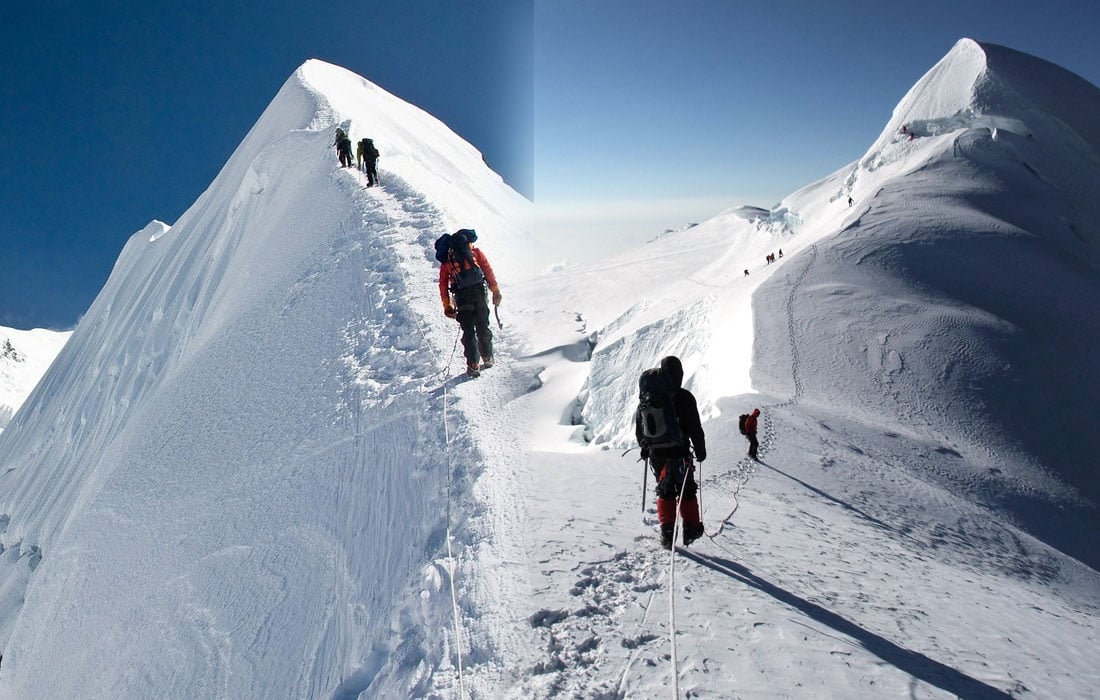

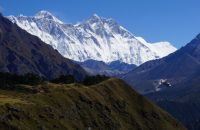
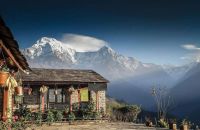
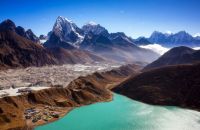
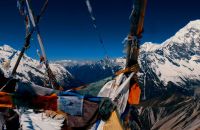
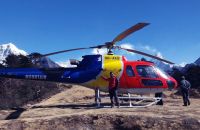
















Recent Comments